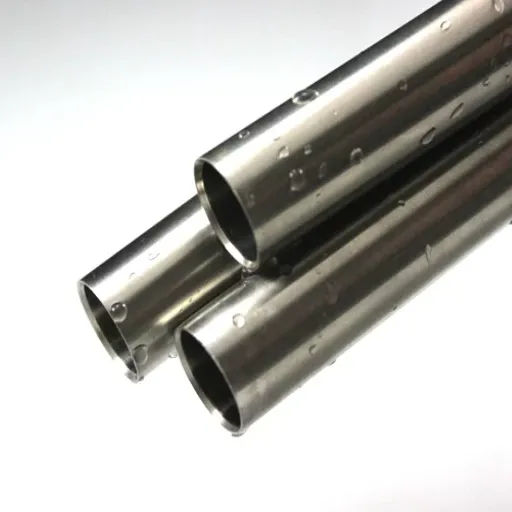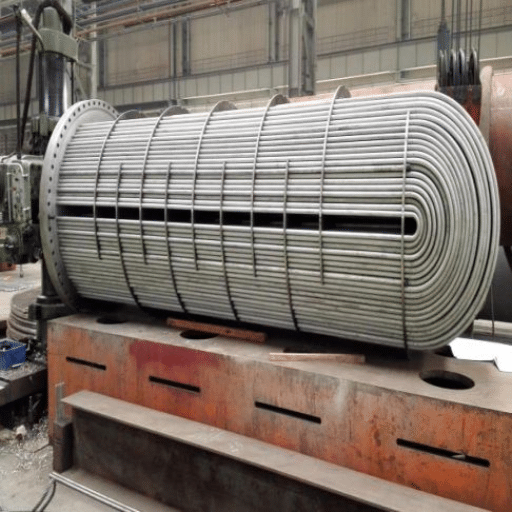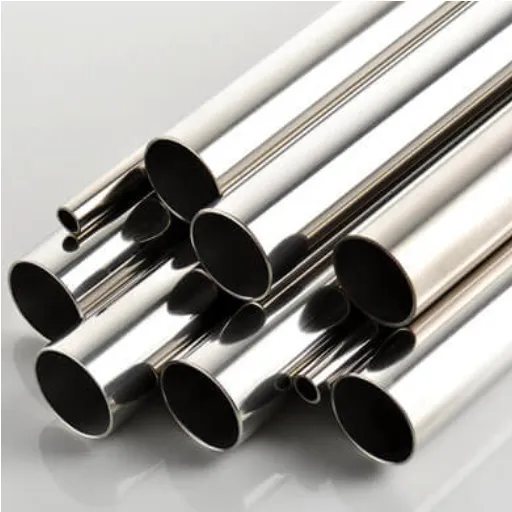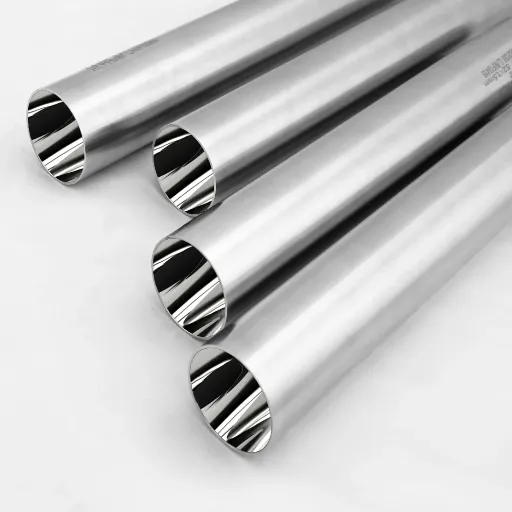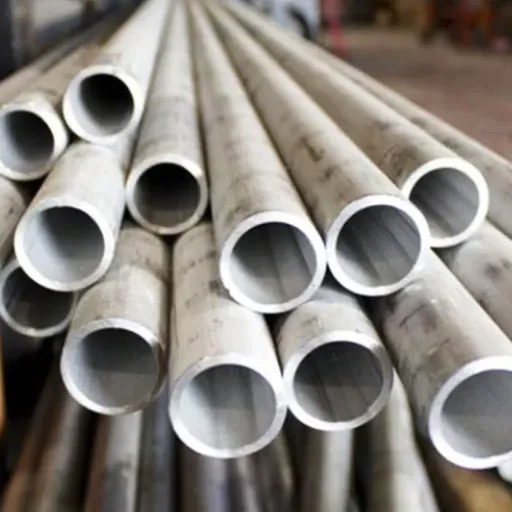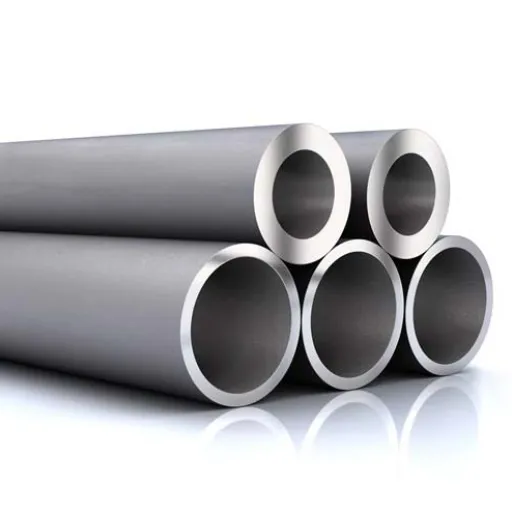Stainless steel tubing stands as an indispensable component across various industries, valued for its strength, durability, and versatility. Among the different types available, electropolished tubing represents an exceptional choice, offering superior smoothness, corrosion resistance, and cleanliness. This comprehensive guide explores the unique advantages of electropolished tubing and examines how pharmaceutical, food and beverage, semiconductor, and medical industries leverage its remarkable properties to achieve elevated performance and hygiene standards.
Understanding Electropolished Stainless Steel Tubing
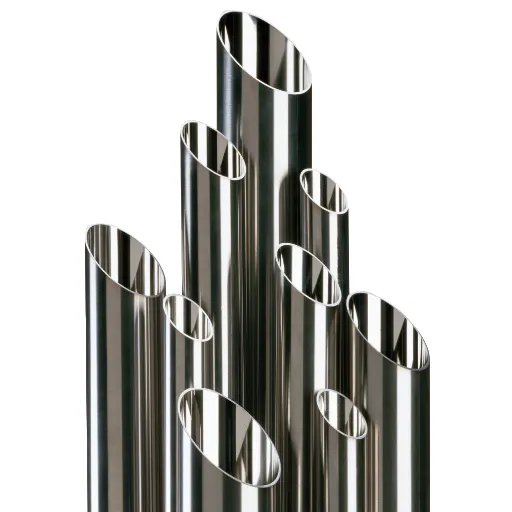
What Is Electropolished Stainless Steel Tubing?
Electropolished stainless steel tubing undergoes an electrochemical polishing process that dramatically enhances its surface quality. During this procedure, a very thin layer of material is removed from the surface through anodic dissolution. The result is an ultra-smooth, shiny, and exceptionally clean surface free from contamination, burrs, and microscopic irregularities.
This enhanced surface finish minimizes the risk of particle accumulation and simplifies cleaning and maintenance protocols, making it ideal for applications requiring strict hygiene standards or precision. Industries including pharmaceuticals, semiconductors, food processing, and biotechnology rely on electropolished stainless steel tubing due to its superior corrosion resistance, biocompatibility, and ability to meet the most rigorous sanitary requirements.
Key Advantages at a Glance
- Ultra-smooth, mirror-like surface finish
- Elimination of surface contaminants and imperfections
- Enhanced resistance to particle build-up
- Superior ease of cleaning and sterilization
316L Electropolished Stainless Steel Properties
Electropolished 316L stainless steel possesses several properties that make it the optimal material for critical applications across different sectors:
| Property | Description | Industry Benefit |
|---|---|---|
| High Corrosion Resistance | Electropolishing removes surface contaminants and imperfections, enhancing resistance to harsh chemicals and moisture | Extended lifespan in aggressive environments |
| Superb Surface Quality | Smooth, mirror-like surface minimizes particle adhesion and contamination risk | Meets stringent hygienic requirements |
| Strength and Durability | Exceptional mechanical strength withstands high pressure and extreme temperatures | Reliable performance over extended periods |
| Non-reactive Nature | Biocompatible, non-reactive, and non-toxic material | Safe for medical and biotech applications |
| Easy Cleaning & Sterilization | Smooth surface resists microorganism and particle adhesion | Simplified sanitation in pharmaceutical and food processing |
| Sanitary Compliance | Meets FDA, ASME BPE, and ISO standards | Ensures regulatory compliance and quality assurance |
Material Comparison
316L electropolished stainless steel tubing excels when compared with standard stainless steel, aluminum, or plastic polymers commonly considered for similar applications. Unlike ordinary stainless steel, 316L offers significantly greater corrosion resistance due to its low carbon content and the added protection provided by molybdenum, ensuring longevity even in harsh environments.
While aluminum is lightweight and more affordable, it cannot endure the temperature extremes and chemical attacks that 316L withstands, particularly in high-pressure sterilization situations. Plastic polymers may prove suitable for cost-sensitive or low-pressure applications, but they are prone to rapid wear, distortion, and contamination under moderate conditions.
🔍 Competitive Advantage
The electropolishing technique provides 316L tubing with a microscopically smooth and passive surface that significantly reduces the risk of bacterial growth. This characteristic is essential in pharmaceutical, food, and biotech industries that maintain uncompromising sanitary standards. When considering operational demands, service longevity, and compliance with strict regulations, 316L electropolished stainless steel tubing consistently emerges as the superior choice.
Applications of Electropolished Stainless Steel Tubing
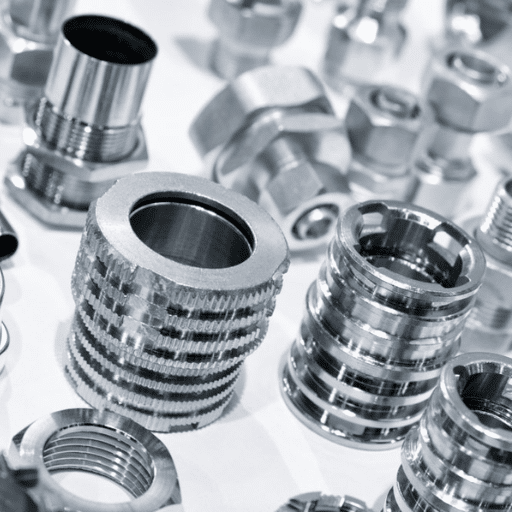
Use in the Semiconductor Industry
Electropolished stainless steel tubing serves as a critical material in the semiconductor field where cleanliness and precision are paramount. Semiconductor manufacturing requires ultra-high purity environments, as the slightest impurity can compromise microchip performance. The electropolishing process reduces surface irregularities and increases smoothness, minimizing the occurrence of particles and contaminants.
Additionally, this tubing offers excellent resistance against the acids and highly corrosive cleaning agents used in semiconductor fabrication. As the semiconductor industry continues expanding with 5G innovations, artificial intelligence, and IoT devices, demand for electropolished stainless steel tubing continues to rise. These tubes not only meet stricter cleanliness standards but also help maintain uniform process conditions, ensuring product quality during high-volume manufacturing.
Applications in Clean Room Environments
Electropolished stainless steel tubing is indispensable in clean room environments, particularly within the semiconductor, pharmaceutical, and biotech sectors. These environments demand extreme cleanliness, low contamination risks, and precise control over particulate levels. The smooth, corrosion-resistant surface of electropolished tubing minimizes the risk of particle accumulation or bacterial growth, ensuring compliance with strict hygiene and performance standards.
✓ Clean Room Benefits
- Enhanced Durability: Withstands rigorous cleaning protocols
- Chemical Resistance: Compatible with clean room processes
- Purity Maintenance: Ideal for transporting sensitive materials
- Regulatory Compliance: Meets strict industry regulations
Role in UHP and Coil Tubing Systems
Ultra-High Purity (UHP) and coil tubing systems are centerpieces in industries requiring the highest levels of cleanliness and precision, particularly semiconductor production, pharmaceuticals, and chemical processing. Electropolished tubing eliminates contamination concerns and ensures sufficient material flow through its smooth, resistant surface. The enhanced durability of electropolished tubing reduces maintenance requirements and extends system longevity, directly addressing the industry’s demand for efficiency and reliability. These advancements enable companies to comply with stringent regulations while keeping pace with increased demand for cleaner and purer production methodologies.
Manufacturing and Electropolishing Process

Modern Methods Overview
Today’s electropolished tubing manufacturing techniques combine precision engineering with highly automated processes to guarantee consistent quality and performance. The process begins with selecting high-grade materials, most commonly stainless steel chosen for its corrosion resistance and strength. Meticulous forming and welding procedures, often using laser technology, ensure accuracy and uniformity. Mechanical polishing and other surface treatments prepare the material for the electropolishing stage, where the tubing is immersed in an electrolytic bath, resulting in a smooth, microscopically clean finish.
The application of Industry 4.0 principles, such as real-time monitoring and data analytics, has markedly improved manufacturing processes. These updates guarantee tighter tolerances, reduced waste, and more efficient production of electropolished tubing. This trend aligns with the market’s focus on sustainability and precision as primary drivers of superior manufacturing outcomes.
Detailed Electropolishing Procedure
5-Step Electropolishing Process
Surface Treatment
The electropolishing method begins with several cleaning stages to remove oils, grease, and impurities from the metal surface. This step is crucial for ensuring maximum polishing efficiency and uniformity.
Electrolyte Solution Immersion
The metal component is immersed in an electrolyte solution, typically consisting of a mixture of acids, while being connected to the anode in an electrical circuit. This arrangement enables the regulated removal of a layer from the surface.
Electrical Current Application
An electric current is applied through the setup, ionizing the metal surface and causing it to dissolve into the electrolyte. This process selectively removes rough points, resulting in a smooth and lustrous surface.
Rinsing and Drying
After achieving the desired polishing effect, the metal is rinsed with deionized water to remove residual electrolyte and prevent surface staining. The metal is then carefully dried to maintain its surface luster.
Evaluation and Quality Assurance
A thorough evaluation is conducted for every electropolished item to ensure it meets predetermined standards for surface finish, tolerance levels, and aesthetic quality. This inspection phase often employs advanced tools and real-time monitoring to ensure accuracy.
Quality Control Techniques
Implementing effective quality control measures during the electropolishing process is crucial for achieving optimum results. The use of advanced real-time analytics has proven invaluable in detecting process variations, allowing manufacturers to quickly identify problems and make data-driven adjustments. These systems enable precise monitoring of parameters such as current density, electrolyte composition, and temperature, drastically reducing error incidence. By leveraging this technology, companies not only meet but often surpass strict industry standards, producing products of outstanding precision and sustainability.
Industry Standards and Specifications for EP Tubing
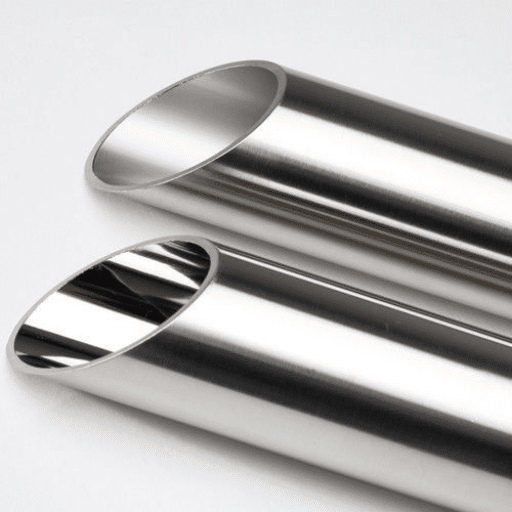
Key Certifications for Electropolished Stainless Steel
Electropolished stainless steel must meet various industry certifications to be considered safe, reliable, and valuable in critical applications. The following are the most important certifications:
| Certification | Purpose & Standards |
|---|---|
| ASTM Standards (A967, B912) |
Specify chemical passivation and electropolishing processes, ensuring corrosion resistance and uniform surface quality |
| ISO 9001 Certification | International standard ensuring the application of stringent Quality Management requirements, securing reliability and production consistency |
| ASME BPE Standard | Certifies that electropolished tubing in pharmaceutical and biotechnology industries meets high sanitary standards for cleanliness and sterilization |
| FDA Compliance | In medical, pharmaceutical, and food industries, ensures product safety when in contact with consumables |
| EN Standards (EN 10204 Type 3.1) |
European certifications recognized worldwide, providing assurance of material traceability and stainless steel product quality |
| Ra Compliance | Critical specification ensuring required surface smoothness for processes like semiconductor fabrication or cleanroom environments |
Regulatory Compliance in Various Industries
Regulatory compliance varies significantly across industries and is often quite stringent. Regulations ensure certain standards are followed to guarantee consumer safety, product quality, and efficient production processes. For example, the pharmaceutical industry is characterized by strict adherence to Good Manufacturing Practices (GMP) to eliminate harmful substances while ensuring consumers receive safe products. Similarly, the food and beverage industry is closely monitored by agencies like the FDA and USDA to maintain product hygiene and integrity.
Recent trends indicate a shift toward automating compliance processes as a primary solution to compliance challenges. The use of AI-powered software and real-time monitoring across various industries has demonstrated positive impacts on meeting regulatory requirements more efficiently. This change not only reduces risks but also builds trust between companies and their stakeholders. The integration of technology into compliance processes indicates major shifts in the sector’s efficiency and flexibility requirements.
Importance of Specifications in Procurement
Specifications are decisive in procurement, forming the foundation for effective and efficient sourcing. They detail prerequisites, materials, and standards for goods or services to be provided. Recent analysis shows a massive increase in searches like “detailed procurement specifications” and “standardized documentation in supply chains,” indicating that businesses are gradually recognizing the importance of precise specifications. This focus reduces uncertainties, aligns suppliers, and consequently minimizes the risk of cost overruns or disputes. Organizations can streamline their procurement processes, foster consistent quality, and build stronger relationships with their supply chain ecosystems by adopting clear and thorough specifications.
Benefits of Using Electropolished Stainless Steel Tubing

🛡️ Enhanced Corrosion Resistance
The ultra-smooth surface finish minimizes surface irregularities where contaminants or corrosive agents might attach. The electropolishing process removes dirt and grease while forming a protective oxide layer, ensuring long-term operational efficiency and reduced maintenance costs.
✨ Improved Cleanliness
Electropolishing delivers exceptional cleanliness and surface finish, perfect for industries requiring utmost sanitary conditions. The process eliminates micro-contaminants, removes biofilms, and creates a non-porous, mirror-like surface that prevents bacterial growth.
💰 Long-term Cost Effectiveness
Investment in electropolishing yields substantial long-term cost savings. The smooth, corrosion-resistant surface extends equipment lifespan, minimizes replacement frequency, and reduces cleaning and sanitation costs, delivering an affordable and efficient solution.
Frequently Asked Questions
What is electropolished stainless steel tubing and how is it made?
Electropolished stainless steel tubing is a premium material treated through an electrochemical process that removes surface defects and increases corrosion resistance. This process produces a smooth, refined appearance that reduces surface roughness to levels suitable for industries like semiconductor and petrochemical that require the highest cleanliness. The tubing is frequently produced from 316L stainless steel, characterized by excellent chemical and physical properties and superior weldability. Additionally, it is often manufactured as seamless tubing, providing added strength and reliability in gas delivery systems. The final product meets the strictest industry standards for purity and performance.
What are the benefits of using EP stainless steel tubing?
EP stainless steel tubing offers numerous benefits, especially in applications requiring utmost purity, such as transportation of ultra-high purity gases. The electropolished surface minimizes contamination risk, ensuring the internal surface remains clean and free of particulates. The tubing is frequently capped and enclosed in dual bags for additional protection during cleaning and packaging. With surface roughness minimized, friction is reduced to very low levels, improving flow characteristics and making it suitable for critical uses like gas delivery and chemical processing. The excellent strength and corrosion resistance of 316L stainless steel simultaneously ensure long-lasting performance across diverse environments.
How does the surface roughness of electropolished tubing affect its performance?
The surface roughness of electropolished tubing is a major factor determining its performance across various applications, particularly in high purity gas systems. Lower roughness levels minimize particle adhesion and reduce contamination probability. This is critical in semiconductor manufacturing, where even the tiniest contaminant can disrupt the entire process. The smooth electropolished finish enables excellent gas flow characteristics, improving gas delivery efficiency and reducing pressure drop. Furthermore, improved surface quality means better fitting compatibility, which is essential for maintaining system integrity. In essence, surface roughness has a profound influence on both the efficacy and reliability of the tubing in critical applications.
What specifications should I look for when purchasing stainless steel tubing?
Several key factors need to be considered when purchasing stainless steel tubing to ensure you select the most suitable product for your application. First, look for tubing conforming to the A269 standard, which represents best practices for seamless construction, guaranteeing structural integrity. Additionally, for sensitive and ultra-high purity applications, ensure the tubing is electropolished and has low surface roughness. Check the chemical composition, especially if you need 316L stainless steel, which is recognized for its superior corrosion resistance and excellent weldability. It is also advisable to verify packaging details, making sure the tubing is capped and double bagged to maintain cleanliness during storage and transport. By following these specifications, you can confidently select the most appropriate stainless steel tubing for your application.
How is the cleaning and packaging process for electropolished stainless steel tubing conducted?
The cleaning and packaging processes for electropolished stainless steel tubing are critical steps in safeguarding product purity and integrity. The tubing undergoes intensive cleaning, including ultrasonic cleaning, which thoroughly cleanses the surface and removes any contaminants. After cleaning, it is common practice to package the tubing in a contamination-free environment to prevent exposure to dirt or particulates. Typically, the tubing’s ends are capped and double bagged to maintain product cleanliness until delivery to the customer. Additionally, nitrogen purging may be employed to ensure the tubing is free of any residual gases, which is important for high purity applications. Food-grade level cleaning and packaging procedures are rigorously followed, especially in semiconductor and pharmaceutical industries where product purity is critical.
Reference Sources
📚 Academic and Technical References
Harvard University – NASA ADS Abstract
A study on the electropolishing of 316L stainless steel small-diameter tubes, highlighting its superior corrosion resistance compared to mechanically polished tubes.
Electropolishing of 316L Stainless Steel Small-Diameter Tubes
University of Arkansas – ScholarWorks
Research on the effects of welding electropolished stainless steel tubing, focusing on 316L stainless steel and its performance under varying conditions.
NASA – Process Specification Document
A detailed process specification for electropolishing corrosion-resistant stainless steel, outlining technical engineering requirements.
Process Specification for Electropolishing of Corrosion-Resistant Stainless Steel
Conclusion
Electropolished stainless steel tubing represents a critical advancement in materials technology, offering unparalleled benefits across pharmaceutical, semiconductor, food processing, and medical industries. Its superior corrosion resistance, exceptional surface quality, and compliance with stringent regulatory standards make it the preferred choice for applications demanding the highest levels of cleanliness and precision. As industries continue to evolve with increasingly strict requirements for purity and performance, electropolished 316L stainless steel tubing will remain an indispensable component in modern industrial processes, delivering long-term value through reduced maintenance costs, extended equipment lifespan, and consistent operational excellence.

